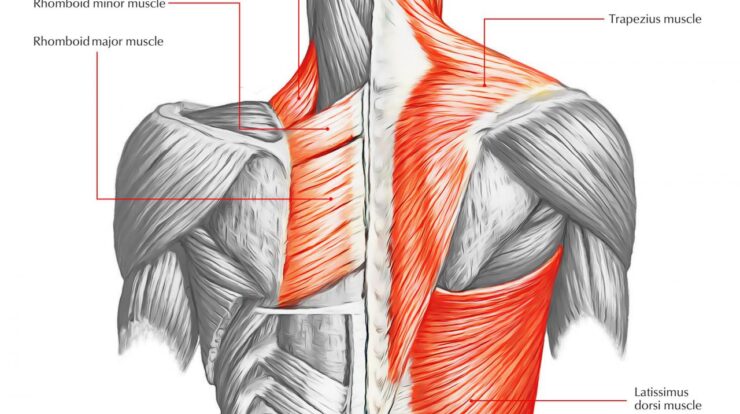
Explain why regular exercise is the best way to prevent flexibility issues. – Regular exercise is widely recognized as the most effective method for preventing flexibility issues. By engaging in regular physical activity, individuals can maintain and improve their range of motion, flexibility, and overall well-being.
Stiff and tight muscles in the back can also lead to pain. Understanding how can stiff and tight muscles result in back pain? is essential for prevention and treatment. Stretching and strengthening exercises can help improve flexibility and reduce muscle tension.
Flexibility is crucial for overall health and mobility. It allows for efficient movement, reduces the risk of injuries, and promotes a sense of well-being. Regular exercise helps maintain and improve flexibility by increasing blood flow, reducing inflammation, and promoting muscle growth.
Introduction: Explain Why Regular Exercise Is The Best Way To Prevent Flexibility Issues.

Flexibility is a crucial component of overall health and well-being. It allows for a wide range of motion, reduces the risk of injuries, and improves posture. Regular exercise is the most effective way to maintain and improve flexibility throughout life.
Benefits of Regular Exercise for Flexibility
Exercise increases range of motion and flexibility by promoting blood flow to the muscles, reducing inflammation, and stimulating the production of synovial fluid, which lubricates joints. Stretching and strengthening exercises are particularly beneficial for improving flexibility.
Stretching exercises, such as dynamic and static stretching, lengthen muscles and increase their range of motion. Strengthening exercises, such as weightlifting and resistance band exercises, build muscle strength and stability, which supports joints and improves overall flexibility.
Flexibility Issues and Their Causes, Explain why regular exercise is the best way to prevent flexibility issues.
Common flexibility issues include muscle tightness, joint stiffness, and reduced range of motion. These issues can be caused by a sedentary lifestyle, aging, and certain medical conditions.
Excess fat in the lower back can also contribute to pain. Incorporating exercises for lower back fat into your routine can help reduce fat and improve muscle tone. These exercises target the muscles that support the lower back, such as the erector spinae and quadratus lumborum.
Sedentary lifestyles lead to muscle atrophy and decreased flexibility. Aging naturally reduces muscle mass and joint flexibility. Medical conditions such as arthritis and osteoporosis can also contribute to flexibility issues.
How Regular Exercise Prevents Flexibility Issues
Regular exercise helps maintain and improve flexibility over time. It increases blood flow to the muscles, reduces inflammation, and promotes muscle growth, all of which contribute to flexibility.
Studies have shown that regular exercise programs can significantly improve flexibility in individuals of all ages. Exercise promotes the production of collagen, a protein that provides elasticity to muscles and tendons, and elastin, a protein that allows tissues to stretch and recoil.
Types of Exercise for Flexibility
Various types of exercise can improve flexibility, including:
- Dynamic stretching:Involves moving muscles through a full range of motion while they are warm.
- Static stretching:Involves holding a stretch for a period of time.
- Yoga:Combines stretching, strengthening, and breathing exercises to improve flexibility and balance.
- Pilates:Focuses on core strength, flexibility, and postural alignment.
Guidelines for Exercise to Improve Flexibility
To improve flexibility through exercise, follow these guidelines:
- Incorporate flexibility exercises into your regular exercise routine at least twice a week.
- Warm up before stretching by engaging in light cardio or dynamic stretching for 5-10 minutes.
- Hold each stretch for 15-30 seconds.
- Focus on stretching major muscle groups, such as the hamstrings, quadriceps, calves, chest, and shoulders.
- Cool down after stretching with 5-10 minutes of light cardio or static stretching.
Final Review

Incorporating regular exercise into one’s routine is essential for preserving flexibility and preventing issues that may arise from sedentary lifestyles or aging. By following the guidelines for exercise frequency, duration, and intensity, individuals can effectively improve their flexibility and maintain optimal health and mobility.
Question & Answer Hub
How often should I exercise to improve flexibility?
Aim for at least two to three sessions of flexibility exercises per week.
Maintaining a healthy weight and engaging in regular exercise can help prevent lower back pain. Incorporating exercises for lower back fat into your routine can help strengthen the back and reduce fat accumulation. By following these tips, you can reduce your risk of developing lower back pain and improve your overall health.
What types of exercises are best for flexibility?
Back pain can be a debilitating condition that affects millions of people worldwide. If you’re experiencing lower back pain, certain exercises can help alleviate the discomfort. Exercises to relieve lower back pain typically involve strengthening the core and back muscles , as well as improving flexibility.
Dynamic stretching, static stretching, yoga, and Pilates are all effective for improving flexibility.
Is it important to warm up before stretching?
Yes, warming up the muscles before stretching helps prevent injuries and improves the effectiveness of the stretches.






